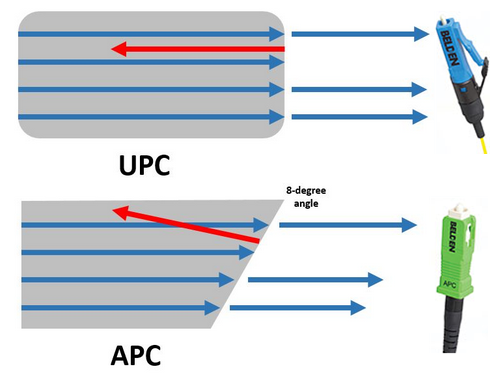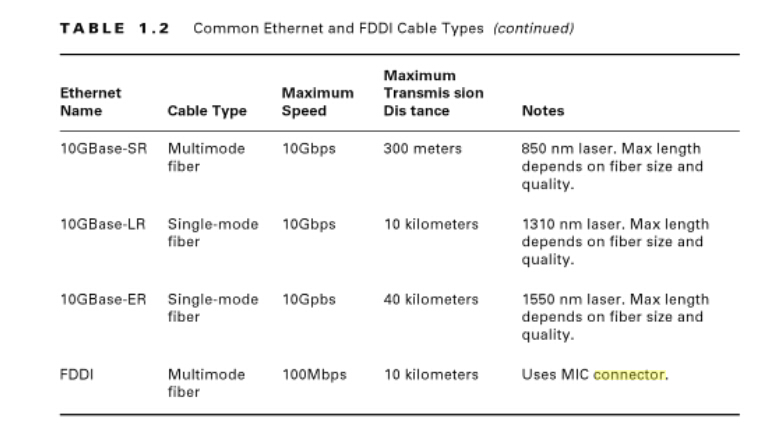We usually hear about descriptions like “LC/UPC multimode duplex fiber optic patch cable”, or “ST/APC single-mode simplex fiber optic jumper”. What do these words UPC and APC connector mean? What’s the difference between them? This article may give some explanations to you.
What’s the Meaning of UPC and APC?
As we know, fiber optic cable assemblies are mainly with connectors and cables, so the fiber cable assembly name is related to the connector name. We call a cable LC fiber patch cable, because this cable is with LC fiber optic connector. Here the words UPC and APC are related only to the fiber optic connectors and have nothing to do with fiber optic cables.
Whenever a connector is installed on the end of fiber, loss is incurred. Some of this light loss is reflected directly back down the fiber towards the light source that generated it. These back reflections will damage the laser light sources and also disrupt the transmitted signal. To reduce back reflections, we can polish connector ferrules to different finishes. There are four types of connector ferrule polishing style in all. UPC and APC are two types of them. Among UPC stands for Ultra Physical Contact and APC is short for Angled Physical Contact.
Differences Between UPC and APC Connector
The main difference between UPC and APC connector is the fiber end face. UPC connectors are polished with no angle, but APC connectors feature a fiber end face that is polished at an 8-degree angle. With UPC connectors, any reflected light is reflected straight back towards the light source. However, the angled end face of the APC connector causes reflected light to reflect at an angle into the cladding versus straight back toward the source. This causes some differences in return loss. Therefore, UPC connector is usually required to have at least -50dB return loss or higher, while APC connector return loss should be -60dB or higher. In general, the higher the return loss the better the performance of the mating of two connectors. Besides the fiber end face, another more obvious difference is the color. Generally, UPC connectors are blue while APC connectors are green. The following figure picture shows the differences mentioned above intuitively.

Application Considerations of UPC and APC Connectors
There is no doubt that the optical performance of APC connectors is better than UPC connectors. In the current market, the APC connectors are widely used in applications such as FTTx, passive optical network (PON) and wavelength-division multiplexing (WDM) that are more sensitive to return loss. But besides optical performance, the cost and simplicity also should be taken into consideration. So it’s hard to say that one connector beats the other. In fact, whether you choose UPC or APC will depend on your particular need. With those applications that call for high precision optical fiber signaling, APC should be the first consideration, but less sensitive digital systems will perform equally well using UPC.
Fiberstore offers a variety of high speed fiber optic patch cables with LC, SC, ST, FC etc. connectors (UPC and APC polish). For more information about UPC and APC fiber optic connectors, please visit fs.com.
Related Article: 6 Steps Help to Choose Right Fiber Optic Patch Cable
Related Article: LC Fiber Connector, Adapter and Cable Assemblies

